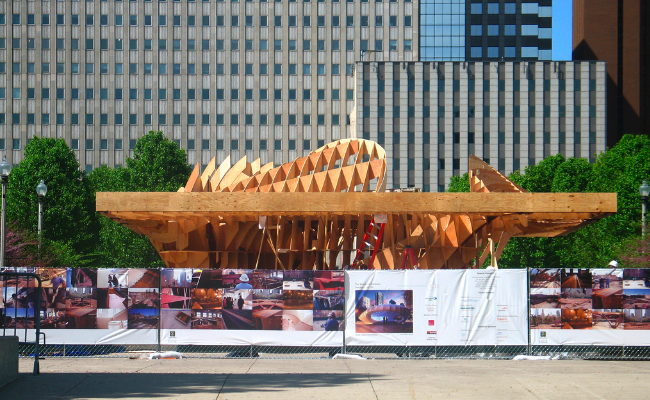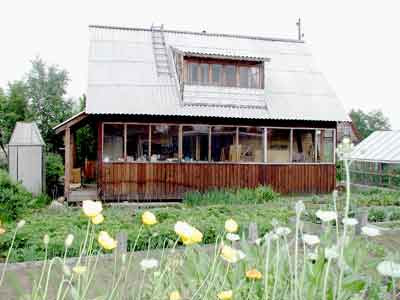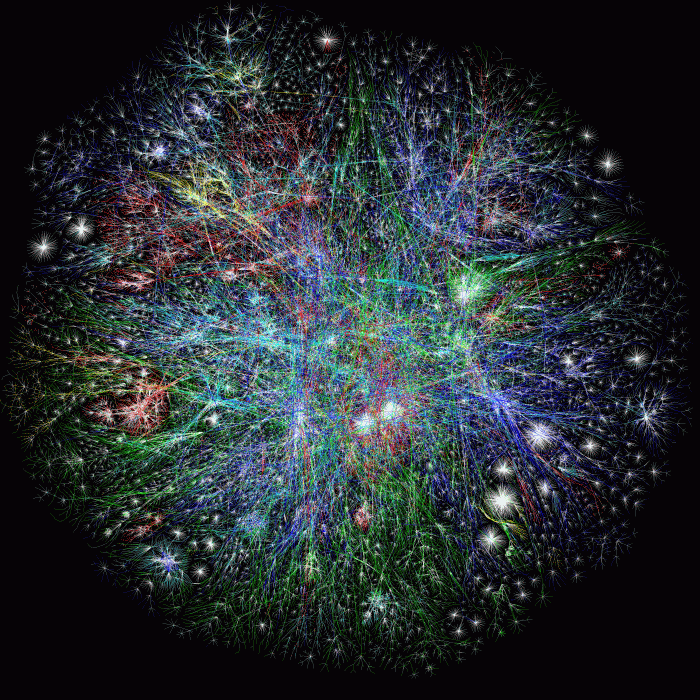 Having just returned from Russia, I’ve been thinking a lot about public and private space. The country has been experiencing rapid privatization since the early 1990s. Many aspects of urban life, from transportation to housing to recreation, are becoming less public.
Having just returned from Russia, I’ve been thinking a lot about public and private space. The country has been experiencing rapid privatization since the early 1990s. Many aspects of urban life, from transportation to housing to recreation, are becoming less public.This isn’t necessarily a bad thing. Private space can encourage responsibility for quality maintenance. We’re usually more likely to repair and improve upon places we own than places we share with everyone.
According to the logic of privatization, public maintenance is best contracted to independent businesses. In a way this makes sense. It provides incentive for efficient work, and as long as high quality is a requirement, we should get intended results at lower costs.
So why do market efficiencies often result in low-quality public space? Strip malls, for example, or dilapidated waterfronts. I guess it has to do with our priorities, and how much we’re willing or able to pay. If public space isn’t valued, there will be little incentive for businesses to compete over insufficient funds allocated toward its maintenance.
We expect to pay more for higher quality cars and houses. But what about bridges, water, roads, and other public entities? Not that we should pay more than we get in return, but it seems that quality services indicate a well-functioning society. While I found the parks, trains, and streets of Moscow nicely maintained, I heard that some neighborhoods are filled with uncollected garbage, and that the metro system was built at the rest of the country's expense. It's important that the benefits of public investment are distributed fairly.
Supporters of privatization might argue that services should be purchased directly by those who benefit from them, so as to reduce the misapplication of public funds. In its most extreme form, this might involve gated communities providing their own infrastructure, tollbooths at every bridge and roadway, and people hiring private companies for protection from crime. This could be considered fair in the sense that services would be more closely related to the amount we pay. However, it is less fair that children from wealthy families should start out with such major advantages over other children in education, health care, and basic safety. While salaries in lower paying fields like teaching and the military might rise with private demand, their services would be controlled by those who could afford them.
 In looking for ways of maintaining public space, Russia’s experience with socialism could offer useful lessons. While there are many aspects of Soviet rule that didn’t work, there are others that continue to benefit city residents. These include accessible transportation, parks, and cultural resources. It will be interesting to see if Russia can draw selectively from capitalism without losing the advantages of its socialist legacy. At the very least, we can study these advantages and see if they might work in other cities.
In looking for ways of maintaining public space, Russia’s experience with socialism could offer useful lessons. While there are many aspects of Soviet rule that didn’t work, there are others that continue to benefit city residents. These include accessible transportation, parks, and cultural resources. It will be interesting to see if Russia can draw selectively from capitalism without losing the advantages of its socialist legacy. At the very least, we can study these advantages and see if they might work in other cities.Is responsible maintenance of public space possible? Working on this would be a sound investment in our quality of life. Of course, the money for public investment has to come from somewhere. This is a question for economists, but it also has to do with where we place our values. If we care enough to improve upon the quality of our surroundings, we can make this happen. It will be important to figure out what improvement would mean and how to go about it. If we make this a priority, things could get better sooner than we think.
(Photo of the Four Horses Fountain by Miroslava De Abreu Coelho. Photo of Tsaritsino Park from Flickr user initsownway1701.)

















